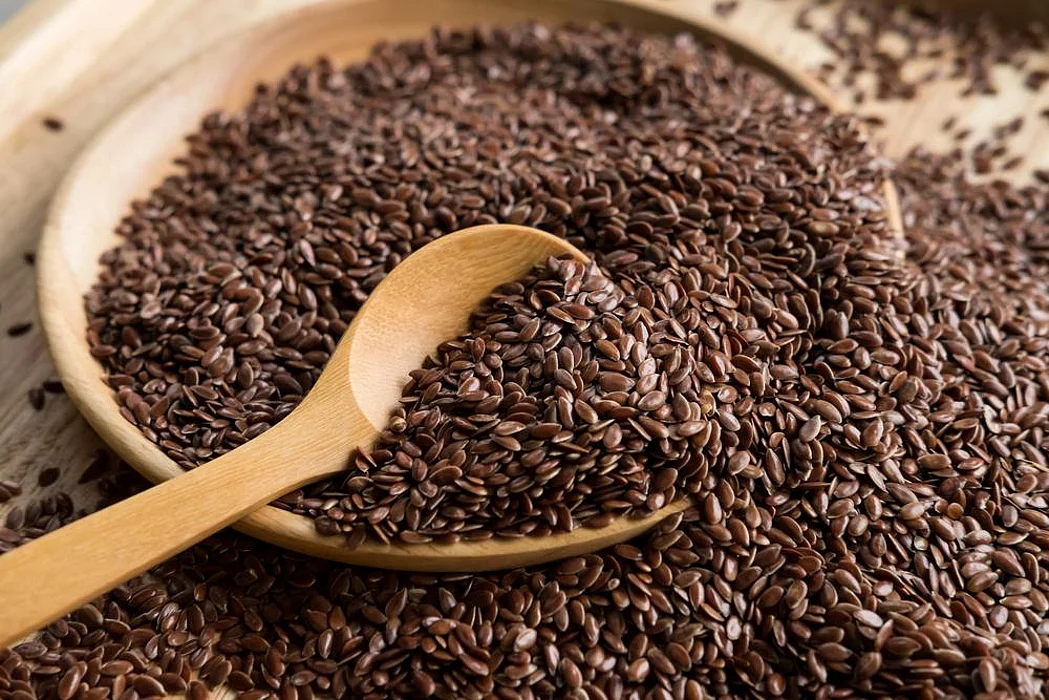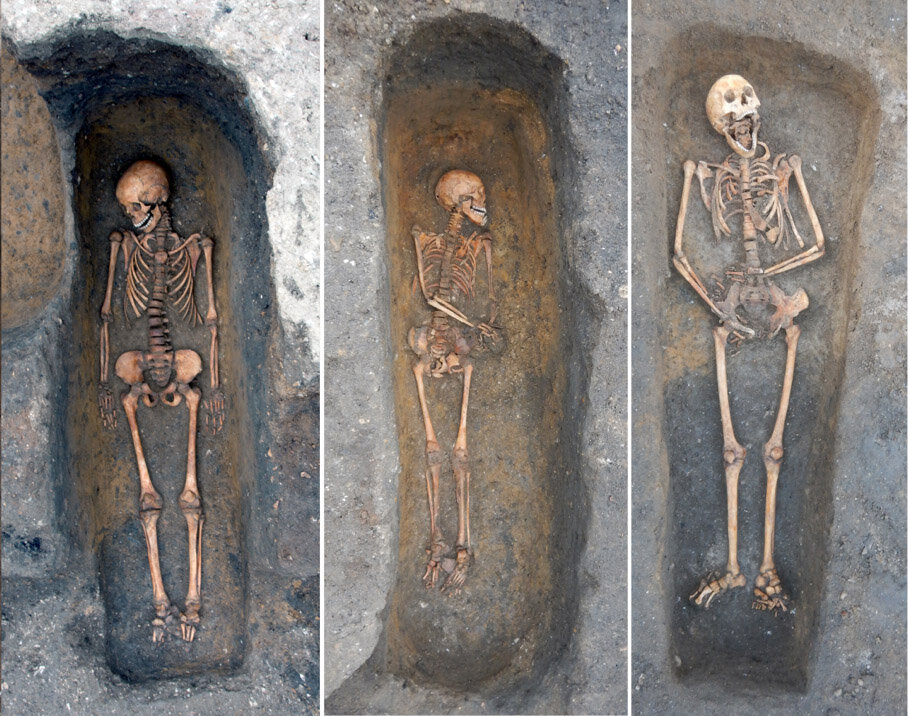
Voraorn Ratankorn/Shutterstock
Chris Woolston
June 19, 2021
You may think of flax as a source of fine linens, but the plant's greatest value may well lie in its small, dark seeds. As far back as the 700s, King Charlemagne ordered every loyal Roman to eat flaxseed for health, and today many alternative medicine gurus echo that decree to all who will listen. Flaxseed is more than just nutritious -- health experts believe the seed can actually help prevent heart disease and many types of cancer.
Why is flaxseed healthy?
The humble-looking flaxseed packs an amazing arsenal of nutrients. First of all, it's rich in soluble fiber, which gives it power to lower cholesterol. Several human studies have found flaxseed to be effective at lowering total cholesterol and low-density lipoproteins (LDLS, the bad cholesterol). It does not appear to have any effect on high-density lipoproteins (HDLs, or good cholesterol) or triglycerides, however. In one study, people with high cholesterol who ate a muffin baked with 50 grams of flaxseed meal every day enjoyed a 7 to 8 percent drop in their LDL cholesterol in just three weeks. Some studies have suggested that flaxseed has little impact on cholesterol in post-menopausal women. However, a 2008 study among post-menopausal Native American women found that daily flaxseed supplementation reduced total cholesterol and LDLs by 7 percent and 10 percent, respectively. These cuts in cholesterol are more than enough to significantly lower a person's risk of heart attack or stroke.
Providing fiber isn't the only way flaxseed might benefit the heart. The seed also contains more omega-3 fatty acids than any other plant source. These fatty acids, which prevent blood clots that could lead to a heart attack or stroke, have recently come to attention as the key ingredient that makes fish so good for the heart. But if omega-3s are what you're after, you may want flax instead of salmon. A gram of flaxseed has twice as much omega-3 as a gram of fish oil.
Another potential use of flaxseed is to treat mild menopausal symptoms in women. One study found that 40 grams of flaxseed was as effective as oral estrogen-progesterone in improving mild symptoms of menopause.
On top of all this, flaxseed is an unbeatable source of multipurpose nutrients called lignans. In fact, the seed offers 75 to 800 times more lignans than other grains and vegetables. Lignans spur powerful antioxidant activity, which means they may help prevent many types of cancer as well as hardening of the arteries. And, like the isoflavones in soy, lignans may be able to prevent breast and other cancers by muting the effects of estrogen in the body. Laboratory studies in rats have found that flaxseed effectively lowers the risk of breast cancer and colon cancer. A 2008 study of 161 men with prostate cancer found that a diet supplemented with flaxseed helped to slow the progression of the disease. More research is needed before flaxseed can be recommended for this purpose, however.
How can I use flaxseed?
Health food stores sell flaxseed in bulk as well as flaxseed meal and oils. The oils make good salad dressings, but they don't contain any lignans or fiber. To get the full benefits of flax, choose the seed or meal, both of which have a mild wheatlike taste. You can sprinkle whole seeds on cereal or casserole or mix ground-up seed with orange juice. (Use a mortar and pestle or coffee grinder to grind the seeds.) You can also use freshly ground flaxseed or meal in place of wheat or oat bran when making muffins, pancakes, waffles, and bread. Ground flaxseed will stay fresh for a day or two in the refrigerator and for a month in the freezer. But don't eat more than two tablespoons in a day; any more, and all of that fiber may make you feel bloated.
References
Jenkins DJ, et al. Health aspects of partially defatted flaxseed, including effects on serum lipids, oxidative measures, and ex vivo androgen and progestin activity: a controlled crossover trial. Am J Clin Nutr ; r;69(3):395-402.
Cunnane SC, et al. High alpha-linolenic acid flaxseed (Linum usitatissimum): some nutritional properties in humans. Br J N; 69(2):443-53.
Greg Annussek. Flaxseed. The Gale Encyclopedia of Alternative Medicine. Gale Group.
American Cancer Society. Flaxseed.
Mayo Clinic. Flaxseed and Flaxseed Oil (Linum usitatissimum).
Hallund J, et al. A lignan complex isolated from flaxseed does not affect plasma lipid concentrations or antioxidant capacity in healthy postmenopausal women. Journal of Nutrition; 136(1): 112-116.
Zhang W, Wang X, Liu Y, Tian H, Flickinger B, Empie MW, Sun SZ. Dietary flaxseed lignan extract lowers plasma cholesterol and glucose concentrations in hypercholesterolaemic subjects. British Journal of Nutrition;; 1-9.
Patade A, et al. Flaxseed reduced total and LDL cholesterol concentrations in Native American postmenopausal women. Journal of Womens Health;; 17(3): 355-66.
Demark-Wahnefried, W, et al. Flaxseed supplementation (not dietary fat restriction) reduces prostate cancer proliferation rates in men presurgery. Cancer Epidemiology, Biomarkers, and Prevention; 17(12): 3577-87.
Natural Medicines Comprehensive Database. Flaxseed.
Lemay, D, et al. Flaxseed dietary supplement versus hormone replacement therapy in hypercholesterolemic menopausal women. Obstetrics and Gynecology;100(3):495-504.
June 19, 2021
You may think of flax as a source of fine linens, but the plant's greatest value may well lie in its small, dark seeds. As far back as the 700s, King Charlemagne ordered every loyal Roman to eat flaxseed for health, and today many alternative medicine gurus echo that decree to all who will listen. Flaxseed is more than just nutritious -- health experts believe the seed can actually help prevent heart disease and many types of cancer.
Why is flaxseed healthy?
The humble-looking flaxseed packs an amazing arsenal of nutrients. First of all, it's rich in soluble fiber, which gives it power to lower cholesterol. Several human studies have found flaxseed to be effective at lowering total cholesterol and low-density lipoproteins (LDLS, the bad cholesterol). It does not appear to have any effect on high-density lipoproteins (HDLs, or good cholesterol) or triglycerides, however. In one study, people with high cholesterol who ate a muffin baked with 50 grams of flaxseed meal every day enjoyed a 7 to 8 percent drop in their LDL cholesterol in just three weeks. Some studies have suggested that flaxseed has little impact on cholesterol in post-menopausal women. However, a 2008 study among post-menopausal Native American women found that daily flaxseed supplementation reduced total cholesterol and LDLs by 7 percent and 10 percent, respectively. These cuts in cholesterol are more than enough to significantly lower a person's risk of heart attack or stroke.
Providing fiber isn't the only way flaxseed might benefit the heart. The seed also contains more omega-3 fatty acids than any other plant source. These fatty acids, which prevent blood clots that could lead to a heart attack or stroke, have recently come to attention as the key ingredient that makes fish so good for the heart. But if omega-3s are what you're after, you may want flax instead of salmon. A gram of flaxseed has twice as much omega-3 as a gram of fish oil.
Another potential use of flaxseed is to treat mild menopausal symptoms in women. One study found that 40 grams of flaxseed was as effective as oral estrogen-progesterone in improving mild symptoms of menopause.
On top of all this, flaxseed is an unbeatable source of multipurpose nutrients called lignans. In fact, the seed offers 75 to 800 times more lignans than other grains and vegetables. Lignans spur powerful antioxidant activity, which means they may help prevent many types of cancer as well as hardening of the arteries. And, like the isoflavones in soy, lignans may be able to prevent breast and other cancers by muting the effects of estrogen in the body. Laboratory studies in rats have found that flaxseed effectively lowers the risk of breast cancer and colon cancer. A 2008 study of 161 men with prostate cancer found that a diet supplemented with flaxseed helped to slow the progression of the disease. More research is needed before flaxseed can be recommended for this purpose, however.
How can I use flaxseed?
Health food stores sell flaxseed in bulk as well as flaxseed meal and oils. The oils make good salad dressings, but they don't contain any lignans or fiber. To get the full benefits of flax, choose the seed or meal, both of which have a mild wheatlike taste. You can sprinkle whole seeds on cereal or casserole or mix ground-up seed with orange juice. (Use a mortar and pestle or coffee grinder to grind the seeds.) You can also use freshly ground flaxseed or meal in place of wheat or oat bran when making muffins, pancakes, waffles, and bread. Ground flaxseed will stay fresh for a day or two in the refrigerator and for a month in the freezer. But don't eat more than two tablespoons in a day; any more, and all of that fiber may make you feel bloated.
References
Jenkins DJ, et al. Health aspects of partially defatted flaxseed, including effects on serum lipids, oxidative measures, and ex vivo androgen and progestin activity: a controlled crossover trial. Am J Clin Nutr ; r;69(3):395-402.
Cunnane SC, et al. High alpha-linolenic acid flaxseed (Linum usitatissimum): some nutritional properties in humans. Br J N; 69(2):443-53.
Greg Annussek. Flaxseed. The Gale Encyclopedia of Alternative Medicine. Gale Group.
American Cancer Society. Flaxseed.
Mayo Clinic. Flaxseed and Flaxseed Oil (Linum usitatissimum).
Hallund J, et al. A lignan complex isolated from flaxseed does not affect plasma lipid concentrations or antioxidant capacity in healthy postmenopausal women. Journal of Nutrition; 136(1): 112-116.
Zhang W, Wang X, Liu Y, Tian H, Flickinger B, Empie MW, Sun SZ. Dietary flaxseed lignan extract lowers plasma cholesterol and glucose concentrations in hypercholesterolaemic subjects. British Journal of Nutrition;; 1-9.
Patade A, et al. Flaxseed reduced total and LDL cholesterol concentrations in Native American postmenopausal women. Journal of Womens Health;; 17(3): 355-66.
Demark-Wahnefried, W, et al. Flaxseed supplementation (not dietary fat restriction) reduces prostate cancer proliferation rates in men presurgery. Cancer Epidemiology, Biomarkers, and Prevention; 17(12): 3577-87.
Natural Medicines Comprehensive Database. Flaxseed.
Lemay, D, et al. Flaxseed dietary supplement versus hormone replacement therapy in hypercholesterolemic menopausal women. Obstetrics and Gynecology;100(3):495-504.












